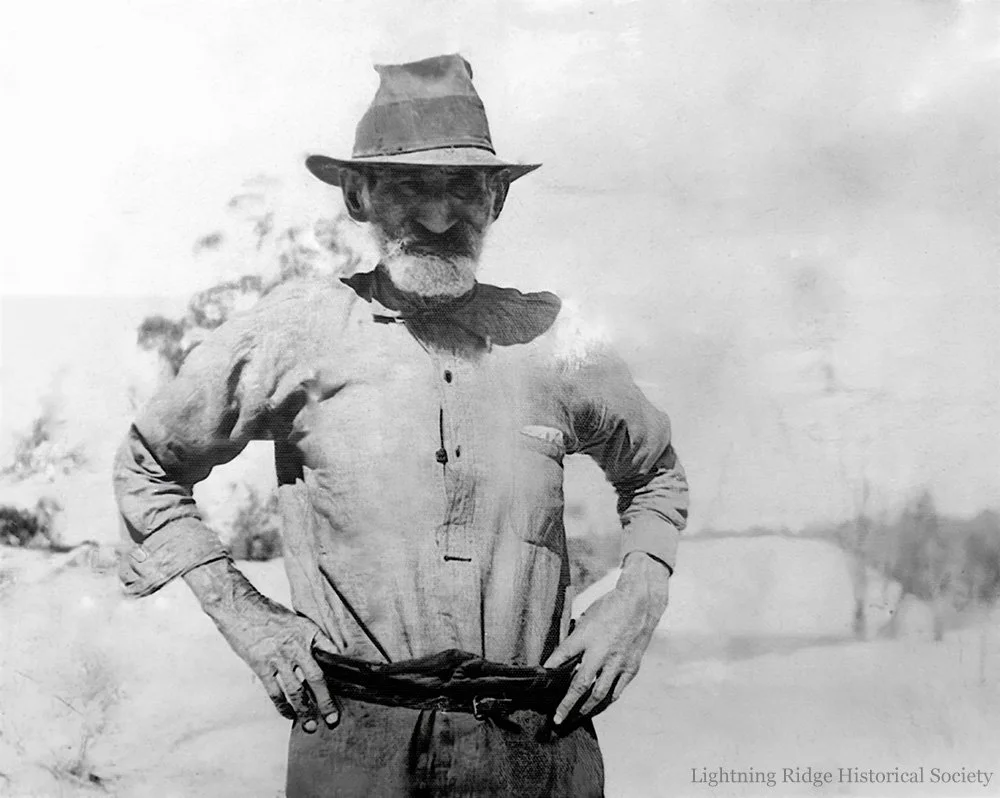The Myth of the Black Opal
The Myth of Black Opal ballet performance, photograph courtesy of Dawn Swane.
Among the lesser-known artistic legacies of Lightning Ridge is a ballet inspired by the origins of its most famous gemstone. The Myth of the Black Opal, choreographed by Dawn Swane and set to music by acclaimed composer John Antill, was performed in Sydney in 1961. Though it saw the stage only a couple of times, the ballet remains a unique cultural artefact, bridging Aboriginal Dreaming, local folklore, and the creative ambitions of a young woman who had grown up with stories of the opal fields.
The ballet was based on a story told to Swane in her childhood by Charlie Nettleton, founding figure of the black opal industry. In 1946, nearing the end of his life at the Balmain Men’s Home in Sydney, Nettleton recounted a tale, likely a reinterpretation of an Aboriginal Dreaming, to the daughter of family friends. In it, two lovers from opposing skin groups defy tribal law and flee across the desert. Exhausted and pursued, they call upon the spirit of the wind for help. A lightning strike transforms them into a single ball of fire, thus forming the first black opal.
Charlie Nettleton, as photographed by the Swane family in the 1930s. Photograph courtesy of Dawn Swane.
Swane trained in ballet in England and later returned to Australia, where she worked in stage and screen arts. Drawing on her memory of Nettleton’s story, she created The Myth of the Black Opal with Antill, who had composed the earlier Aboriginal-themed ballet Corroboree (1946). The ballet premiered at the Elizabethan Theatre and was later performed again at Hunters Hill Town Hall. It featured modern staging and costume design.
Only a few photographs, costume sketches, and audio recordings of the performance remain. These materials, displayed on interpretive panels, are preserved by the Lightning Ridge Historical Society.
In 2014, Dawn Swane returned to Lightning Ridge to unveil the bronze statue of Charlie Nettleton outside the Historical Society’s Bush Nurse Association (BNA) Cottage. Her ties to the town were deep: her family had known Nettleton in the 1930s, and her brother Peter was a miner at the Grawin before his death in a cave in in 1988. Through her choreography, Swane has helped preserve one of Lightning Ridge’s most romanticised legends, ensuring that the Myth of the Black Opal lives on not only in stone, but in story and art.
Article: Research by Russell Gawthorpe and Leisa Carney, edited by Russell Gawthorpe. LRHS research compiled by Len Cram and Barbara Moritz. Sources: ‘John Henry Antill’, Australian Dictionary of Biography, vol. 17, 2007; Ballet Australia playbill, 16 December 1961, LRHS collection.



